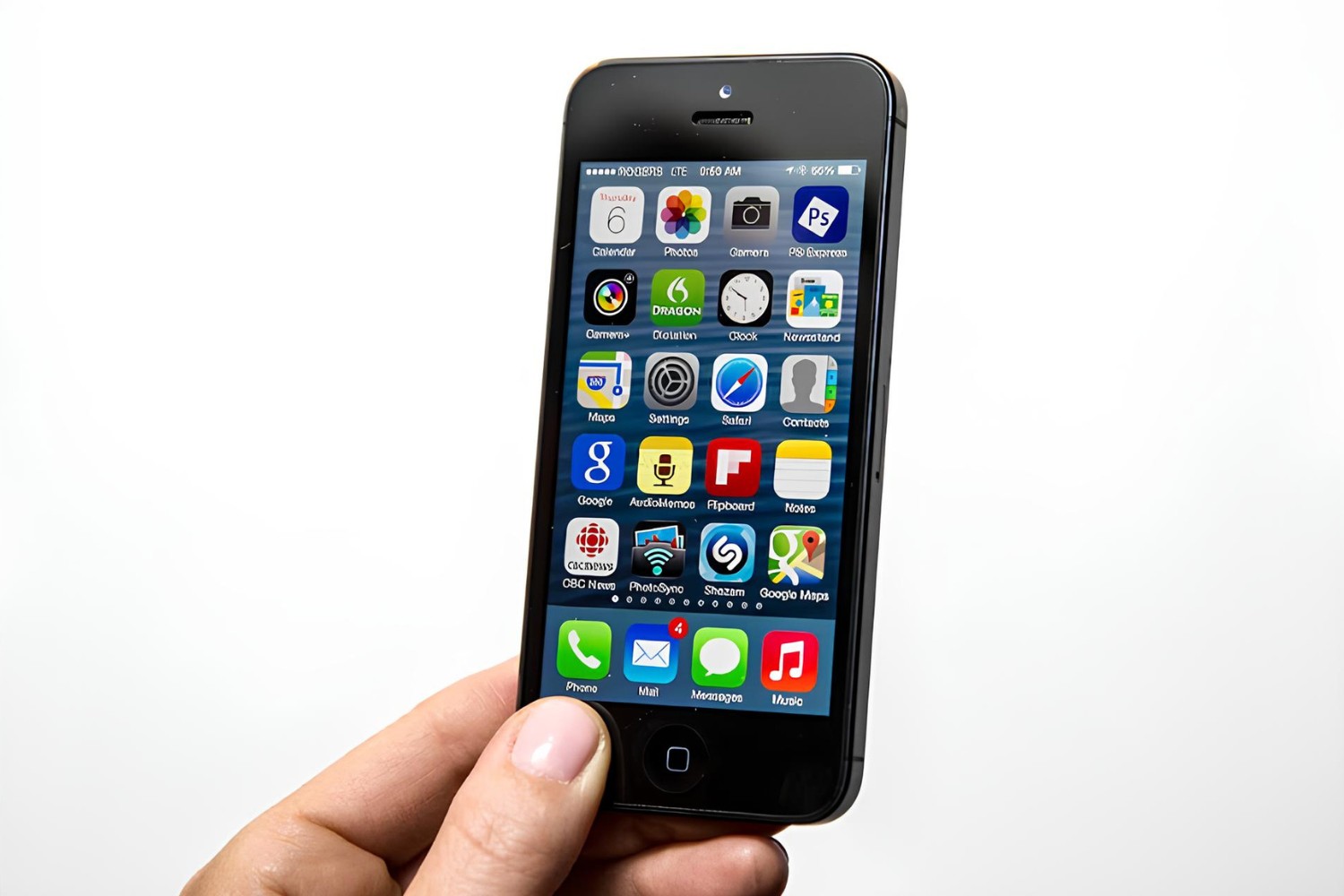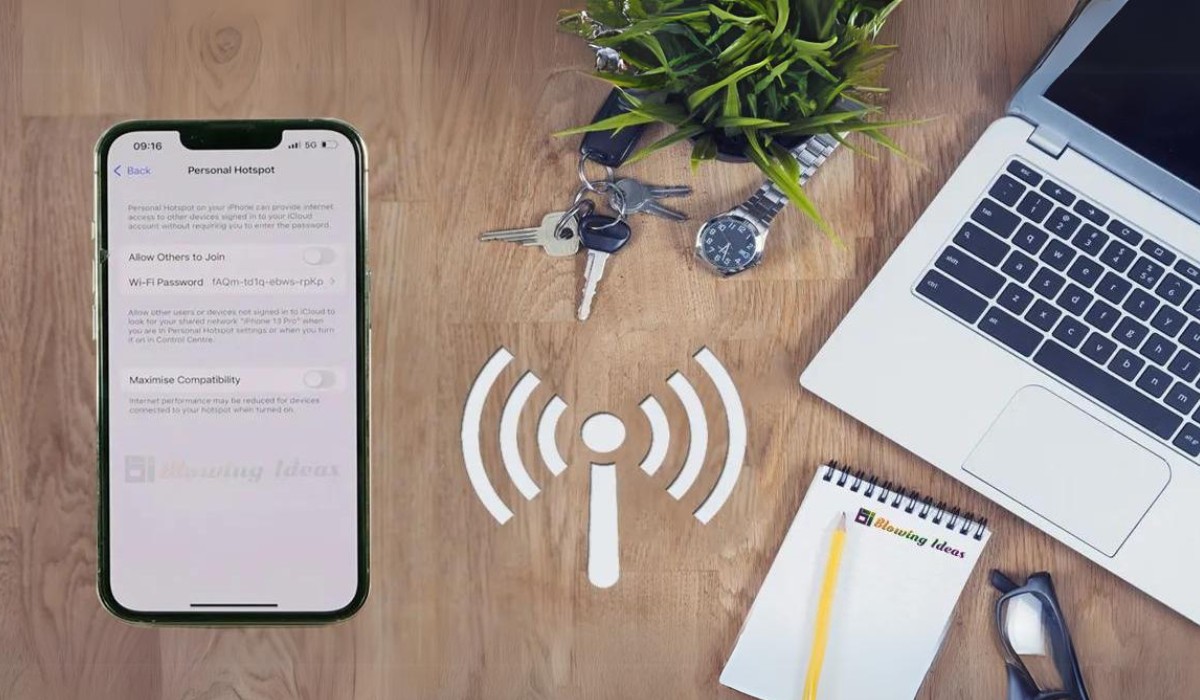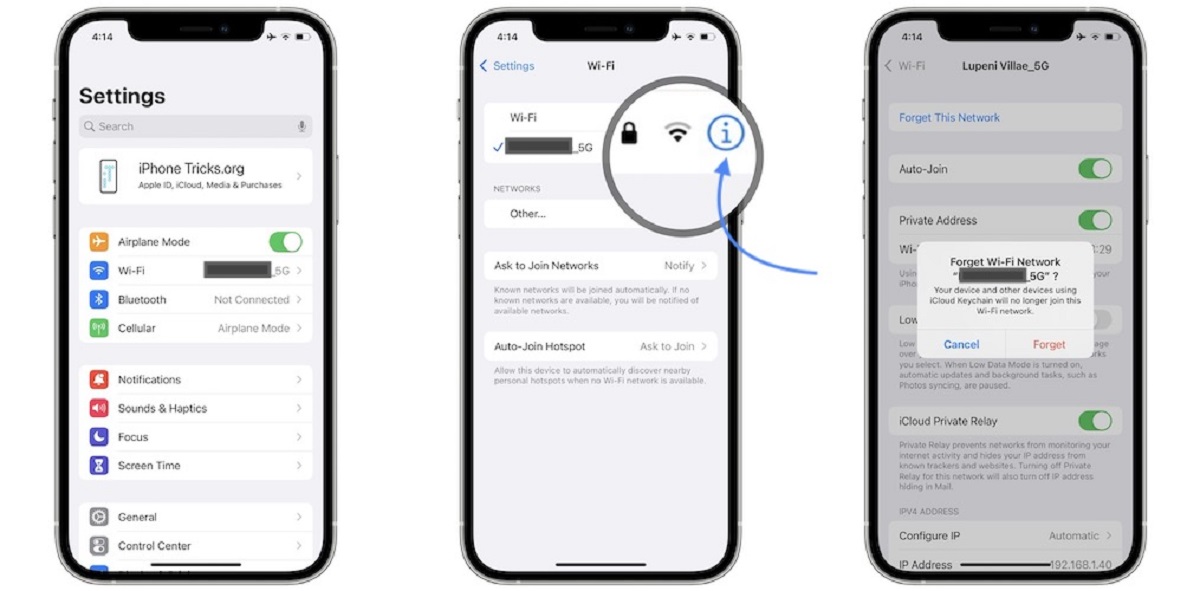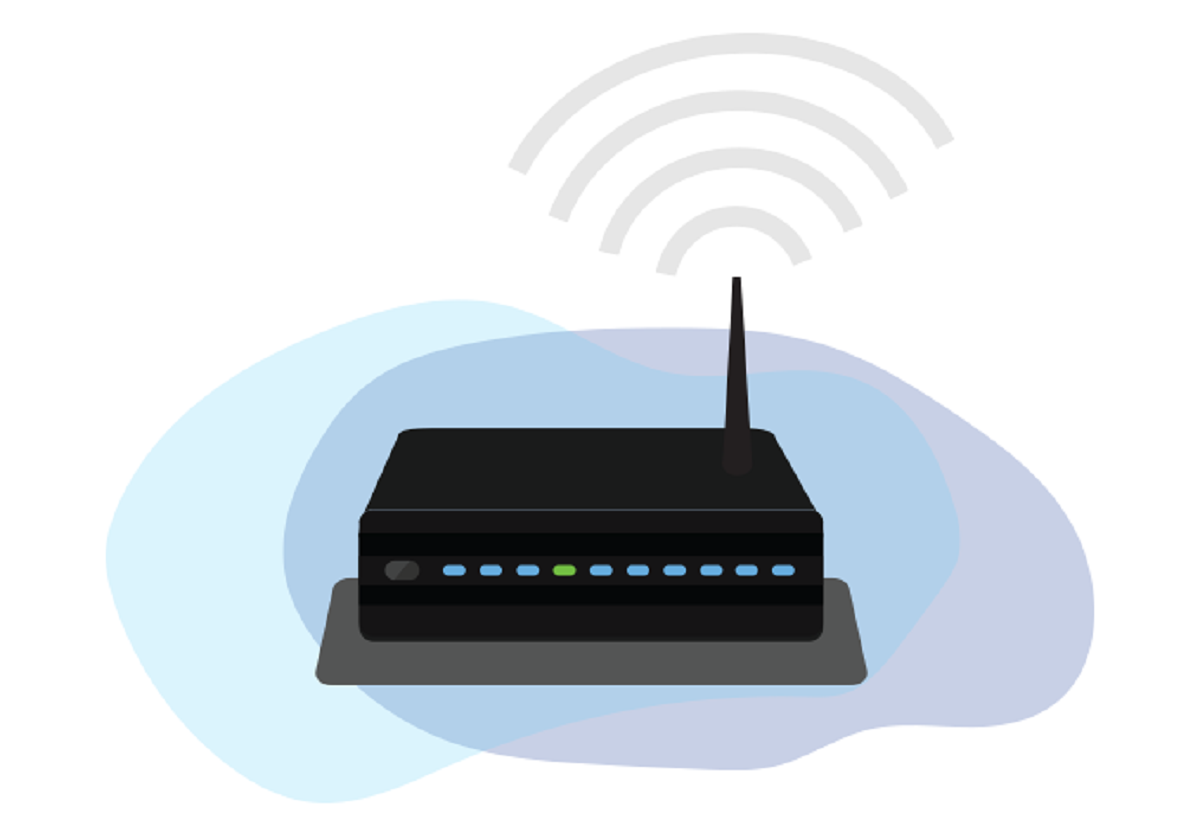Check Your Wi-Fi Signal Strength
One of the most common reasons for Wi-Fi disconnecting issues is poor signal strength. When your Wi-Fi signal is weak, it can lead to intermittent or dropped connections, causing frustration and hindering your online activities. To troubleshoot this problem, it's essential to check your Wi-Fi signal strength and take necessary steps to improve it.
Here are some steps to check and enhance your Wi-Fi signal strength:
-
Position of Your Router: The placement of your router plays a crucial role in determining the strength of your Wi-Fi signal. Ensure that your router is positioned in a central location within your home or office. Placing it in an open area, away from obstructions such as walls and large objects, can help maximize signal coverage.
-
Distance from the Router: The distance between your device and the router can significantly impact the signal strength. If you're experiencing connectivity issues, try moving closer to the router to see if the signal improves. Alternatively, consider relocating the router to a more centralized location for better coverage throughout your space.
-
Obstructions and Interference: Physical obstructions, such as walls, furniture, and appliances, can weaken Wi-Fi signals. Additionally, electronic devices like cordless phones, microwave ovens, and Bluetooth gadgets can interfere with Wi-Fi signals, leading to disruptions. To mitigate these issues, try repositioning your router and minimizing the number of obstructions between the router and your devices.
-
Wi-Fi Analyzer Apps: Utilize Wi-Fi analyzer apps available for smartphones and computers to assess the strength of your Wi-Fi signal. These apps provide valuable insights into signal quality, channel congestion, and potential sources of interference, empowering you to make informed decisions to optimize your Wi-Fi network.
-
Router Settings: Access your router's settings through a web browser to adjust the transmission power and channel settings. By fine-tuning these configurations, you can potentially enhance the signal strength and minimize interference from neighboring networks.
-
Consider Wi-Fi Extenders: If certain areas of your home or office experience consistently weak Wi-Fi signals, consider investing in Wi-Fi extenders or mesh networking systems. These devices can amplify and distribute the Wi-Fi signal more effectively, ensuring broader coverage and stronger connectivity throughout your space.
By proactively addressing and optimizing your Wi-Fi signal strength, you can mitigate disconnection issues and enjoy a seamless and reliable online experience. Taking these steps empowers you to make the most of your Wi-Fi network, enhancing productivity and satisfaction in your digital endeavors.
Restart Your Device
Restarting your device is a simple yet effective troubleshooting step that can help resolve a wide range of connectivity issues, including Wi-Fi hotspot disconnections. When your device is powered on for extended periods, it may encounter software glitches or temporary conflicts that can disrupt its ability to maintain a stable connection to the Wi-Fi network. By restarting the device, you initiate a fresh start, allowing it to reestablish its connection and potentially resolve the underlying issues causing the disconnections.
Here's how you can effectively restart your device to troubleshoot Wi-Fi connectivity problems:
Mobile Devices (Smartphones and Tablets)
-
Power Off and On: Begin by powering off your mobile device completely. Once it's turned off, wait for a few moments before powering it back on. This process allows the device to clear its temporary memory and restart all essential services, including the Wi-Fi connection. After the device has fully restarted, check if the Wi-Fi disconnection issue persists.
-
Toggle Airplane Mode: Another quick method to initiate a restart for your device's connectivity features is to toggle the Airplane Mode on and off. Activating Airplane Mode disables all wireless connections, including Wi-Fi and cellular data. After a brief interval, turning off Airplane Mode reactivates these connections, effectively refreshing the device's network settings.
Computers and Laptops
-
Shut Down and Power Up: For computers and laptops, the process of restarting involves shutting down the system completely and then restarting it. To do this, save any open work, close all applications, and proceed to shut down the device. After a brief pause, power it back on to initiate a fresh boot cycle. This action clears the system's memory and reloads all essential components, potentially resolving any software-related issues affecting the Wi-Fi connection.
-
Reset Network Adapters: In some cases, Wi-Fi connectivity issues on computers can be resolved by resetting the network adapters. This can be achieved by accessing the device's network settings and initiating a reset for the Wi-Fi adapter. After the reset, the adapter reinitializes its connection to the Wi-Fi network, potentially addressing any underlying issues causing disconnections.
By incorporating the simple yet impactful step of restarting your device into your troubleshooting routine, you can effectively address Wi-Fi hotspot disconnection issues. This method serves as an initial and often successful approach to resolving connectivity problems, offering a quick and accessible solution for individuals encountering intermittent Wi-Fi disruptions.
Reset Your Network Settings
Resetting your network settings can serve as a powerful remedy for addressing persistent Wi-Fi hotspot disconnection issues. Over time, network configurations and preferences on your devices may become corrupted or misaligned, leading to connectivity disruptions. By initiating a network settings reset, you can effectively clear out these inconsistencies and restore your device's network functionality to a stable state.
Here's a detailed exploration of the steps involved in resetting your network settings across various devices:
Mobile Devices (Smartphones and Tablets)
Android Devices
- Navigate to Network Settings: Access the "Settings" menu on your Android device and locate the "System" or "General Management" section.
- Reset Network Settings: Within the system settings, select the "Reset" or "Reset Options" category, and choose the "Reset Wi-Fi, mobile & Bluetooth" option. Confirm the action to initiate the network settings reset. This process will clear saved Wi-Fi networks, Bluetooth devices, and cellular network preferences.
iOS Devices (iPhone and iPad)
- Access the Settings Menu: Open the "Settings" app on your iOS device and proceed to the "General" section.
- Reset Network Settings: Within the "General" settings, select "Reset" and then choose "Reset Network Settings." Upon confirmation, your device will reset all network-related preferences, including Wi-Fi, cellular, and VPN configurations.
Computers and Laptops
Windows Operating System
- Open Network Settings: Access the "Settings" menu on your Windows computer and navigate to the "Network & Internet" section.
- Reset Network: Within the network settings, select the "Network Reset" option. This feature allows you to initiate a complete network reset, which clears network adapters, DNS settings, and other network configurations.
macOS
- Access Network Preferences: Open the "System Preferences" on your Mac and select the "Network" option.
- Reset Network Configuration: Within the network settings, choose the active network connection (Wi-Fi or Ethernet), and click on the "Advanced" button. From the advanced settings, select the "Renew DHCP Lease" or "Reset Configuration" option to clear out network settings.
By resetting your network settings on your devices, you effectively eliminate potential inconsistencies and conflicts that may be contributing to Wi-Fi disconnections. This process provides a fresh start for your device's network functionality, allowing it to reestablish stable and reliable connections to Wi-Fi hotspots and other network resources.
Incorporating the practice of resetting network settings into your troubleshooting repertoire empowers you to proactively address connectivity issues, ensuring a seamless and uninterrupted online experience. Whether on mobile devices or computers, the ability to reset network settings serves as a valuable tool in resolving Wi-Fi hotspot disconnection challenges.
Update Your Device's Software
Keeping your device's software up to date is a crucial aspect of maintaining optimal performance and addressing potential connectivity issues, including Wi-Fi hotspot disconnections. Software updates often include bug fixes, security enhancements, and improvements to network compatibility, making them instrumental in ensuring the seamless operation of your device's connectivity features.
When it comes to updating your device's software, there are several key considerations and steps to keep in mind:
Mobile Devices (Smartphones and Tablets)
Android Devices
For Android devices, software updates are typically delivered through the "Settings" menu. Navigate to the "About phone" or "About tablet" section and select "System updates" to check for available updates. If an update is available, follow the on-screen prompts to download and install the latest software version. It's essential to have a stable Wi-Fi connection during the update process to ensure a smooth and uninterrupted installation.
iOS Devices (iPhone and iPad)
On iOS devices, software updates can be accessed through the "Settings" app. Navigate to "General" and select "Software Update" to check for available updates. If an update is available, follow the prompts to download and install the latest software version. Ensure that your device is sufficiently charged or connected to a power source during the update to prevent any interruptions.
Computers and Laptops
Windows Operating System
For Windows computers, software updates are managed through the "Settings" menu. Access the "Update & Security" section and select "Windows Update" to check for available updates. If updates are available, initiate the download and installation process, ensuring that your device remains connected to a stable Wi-Fi network throughout the update.
macOS
On Mac computers, software updates can be accessed through the "System Preferences" menu. Select "Software Update" to check for available updates. If updates are available, proceed with the download and installation process, ensuring that your device remains connected to a stable Wi-Fi network during the update.
By regularly updating your device's software, you ensure that it remains equipped with the latest enhancements and fixes, including those related to Wi-Fi connectivity. These updates can address underlying software issues that may be contributing to Wi-Fi hotspot disconnections, ultimately promoting a more stable and reliable network experience.
Incorporating the practice of routinely checking for and installing software updates empowers you to proactively maintain the health of your device's connectivity features, reducing the likelihood of encountering Wi-Fi disruptions attributed to software-related issues.
Check for Interference
Interference from various sources can significantly impact the stability and performance of your Wi-Fi network, leading to disconnections and disruptions. Identifying and mitigating potential sources of interference is crucial in ensuring a robust and reliable Wi-Fi connection. Here are key factors to consider when checking for interference:
Physical Obstructions
Physical obstructions such as walls, furniture, and large appliances can obstruct the propagation of Wi-Fi signals, resulting in weakened connectivity and potential disconnections. When assessing your Wi-Fi network, take note of the positioning of these obstructions and their proximity to your router and connected devices. By minimizing the number of physical barriers between your devices and the router, you can enhance signal propagation and reduce the impact of obstructions on your Wi-Fi connection.
Electronic Devices
Electronic devices operating on similar frequencies as Wi-Fi, such as cordless phones, microwave ovens, and Bluetooth-enabled gadgets, have the potential to interfere with Wi-Fi signals, leading to signal degradation and intermittent disconnections. It's essential to be mindful of the placement and usage of these devices in relation to your Wi-Fi network. Consider repositioning such devices or relocating your router to minimize the impact of electronic interference on your Wi-Fi connectivity.
Channel Congestion
In environments with multiple Wi-Fi networks in close proximity, channel congestion can arise, leading to signal interference and reduced network performance. Utilizing Wi-Fi analyzer apps or built-in network diagnostics on your router can help identify congested channels and guide you in selecting the optimal Wi-Fi channel with minimal interference. By strategically configuring your router to operate on a less congested channel, you can mitigate the impact of channel interference and enhance the stability of your Wi-Fi connection.
Signal Overlap and Range Extenders
In scenarios where Wi-Fi range extenders or mesh networking systems are employed to amplify signal coverage, it's essential to ensure that these devices are strategically positioned to avoid signal overlap and potential interference. Overlapping signals from multiple access points can lead to signal degradation and connectivity issues. By optimizing the placement of range extenders and ensuring seamless signal handoff between access points, you can maintain a cohesive Wi-Fi network with minimized interference.
Environmental Factors
Environmental elements such as metal structures, water bodies, and neighboring wireless devices can introduce additional complexities to your Wi-Fi network. Conducting a thorough assessment of your immediate surroundings and identifying potential environmental factors that may impact Wi-Fi signal propagation is essential. By understanding and addressing these environmental influences, you can proactively mitigate interference and optimize the performance of your Wi-Fi network.
By diligently checking for interference and taking proactive measures to address potential sources of disruption, you can significantly enhance the stability and reliability of your Wi-Fi connection. This proactive approach empowers you to create an environment conducive to optimal Wi-Fi performance, minimizing the likelihood of disconnections and ensuring a seamless online experience.
Contact Your Internet Service Provider
If you've exhausted various troubleshooting methods and continue to experience persistent Wi-Fi hotspot disconnections, reaching out to your Internet Service Provider (ISP) can provide valuable insights and solutions. Your ISP plays a pivotal role in delivering and maintaining your internet connection, making them a crucial resource for addressing complex connectivity issues.
When contacting your ISP regarding Wi-Fi hotspot disconnections, it's essential to approach the interaction with a clear understanding of the problem and a willingness to collaborate in identifying and resolving the underlying issues. Here are key steps to consider when engaging with your ISP:
Describe the Disconnection Symptoms
Articulate the specific symptoms and patterns of the Wi-Fi disconnections you've encountered. Provide details such as the frequency of disconnections, the duration of each occurrence, and any observed patterns or triggers. By offering a comprehensive overview of the disconnection behavior, you enable your ISP to gain a deeper understanding of the issue and tailor their support accordingly.
Verify Network Integrity
Work with your ISP to verify the integrity of the broader network infrastructure. This may involve conducting diagnostic tests to assess the quality of the signal reaching your premises, identifying potential network congestion or outages, and ensuring that the equipment and infrastructure on the ISP's end are functioning optimally. Collaborating with your ISP in this capacity can uncover network-level issues that may be contributing to the Wi-Fi disconnections.
Request Technical Support and Guidance
Seek technical support and guidance from your ISP's support team. This may involve scheduling a technician visit to assess and optimize your home network setup, obtaining recommendations for compatible networking equipment, or receiving tailored advice on optimizing your Wi-Fi configuration. Engaging with your ISP's technical experts can yield actionable insights and solutions to address the disconnection challenges.
Explore Service Upgrade Options
Inquire about potential service upgrade options that may better align with your connectivity needs. Your ISP can provide information on higher-tier internet plans, enhanced router and modem options, and additional features designed to optimize Wi-Fi performance and reliability. By exploring upgrade possibilities, you can access enhanced network capabilities that mitigate the risk of Wi-Fi disconnections.
Request Ongoing Monitoring and Support
Request ongoing monitoring and support from your ISP to ensure the sustained stability of your Wi-Fi connection. This may involve periodic network assessments, proactive troubleshooting, and access to dedicated support channels for addressing any future connectivity concerns. Establishing a collaborative partnership with your ISP for ongoing support can instill confidence in the long-term reliability of your Wi-Fi network.
By proactively engaging with your Internet Service Provider and leveraging their expertise and resources, you can navigate complex Wi-Fi hotspot disconnection challenges with a comprehensive and tailored approach. This collaborative effort fosters a proactive and solution-oriented dynamic, empowering you to optimize your Wi-Fi connectivity and enjoy a seamless online experience.

























